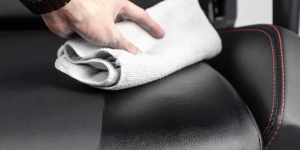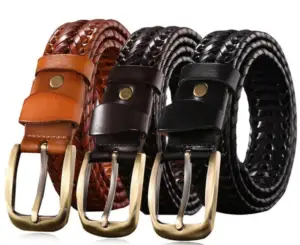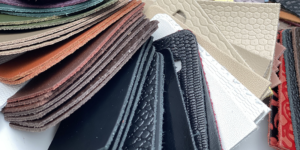How to keep cats off leather furniture (You NEED this!)
As a cat owner, I can confidently confirm that cats are notorious for scratching furniture, and leather is no exception. They love scratching leather and this leaves behind unsightly scratch marks.
While the unsightly scratches on the leather can be repaired, if you’ve found your feline friend sharpening their claws on your couch or recliner, you’re probably wondering how to keep cats off leather furniture.
There are a few simple strategies you can use to deter your cat from using your furniture as a scratcher, which we shall talk about in this article. So keep reading.

Why do cats like scratching leather?
If you wondering why cats like scratching leather, there are a number of reasons.
Cats are attracted to leather because it is soft and pliable. They enjoy the sensation of sinking their claws into it and the noise it makes due to the rough texture is especially satisfying for the cats.
Also, leather provides an ideal surface for scratching as it offers just the right amount of resistance and traction.
Cats also love to scratch leather because it is a natural way to groom themselves. By raking their claws through the leather, they remove any dirt or debris that may be clinging to their fur.
In addition, scratching helps the cats to stretch and exercise their front leg muscles, shed their claws, and mark their territory.
So, it’s not surprising that your cats may enjoy sharpening their claws on your leather couch.
8 Ways how to keep cats off leather furniture
One of the easiest ways to keep cats off leather furniture is to provide them with an alternative scratching surface. Cat trees, scratching posts, and scratching pads or boards are a great way to give your cat a place to scratch without damaging your furniture.
Here are a few different things you can do to help your cat stop scratching your leather furniture.
1. Cat scratch deterrent
There are a few different options when it comes to deterring your cat from scratching furniture, carpets, and other objects in your home.
The best deterrent method is to apply a sticky substance to the areas where your cat likes to scratch to make the surfaces less appealing to scratch.
You can use double-sided tape or a product made specifically for this purpose such as CLAWGUARD and stick them on surfaces or on furniture that you don’t want the cats to scratch.
Cats hate the sticky feeling on their paws, which helps to discourage cats from scratching surfaces.
2. Alternative scratching surface
Cats will always scratch your furniture unless you find an alternative surface to keep them busy.
Our first recommendation is to provide them with a scratching post or tree and place it in an area where they like to scratch.
Not only does the post provide the cats with a place to scratch, which helps keep their nails healthy, but also helps to reduce the amount of damage they do to your furniture.

When choosing a scratching post, make sure it is sturdy and covered in a material that feels good to scratch (usually sisal rope).
It should also be tall enough so your cat can stretch out while scratching and have a rough surface so its claws can grip properly.
Some cats prefer to scratch soft materials like carpets while others prefer to scratch harder surfaces like wood. Thus, another option is to use a rug or carpet remnant as a scratching surface or get a wooden scratching board or pad.
You can also use a horizontal beam or rough-textured tile as a scratching surface. Just make sure the surface is stable and won’t move around when your cat scratches it.
It’s important to provide your cats with a variety of scratching surfaces so that they can satisfy their natural scratching instincts. Just make sure it’s something your cat will be interested in scratching.
3. Cat scratch-repellent spray
Another option is to apply a cat repellent or deterrent spray or powder to the furniture. These sprays and powders make the furniture smell or taste bad to cats, so they will naturally avoid scratching it.
The ingredients in these sprays can vary, but typically most contain citrus or herbal scent and although they won’t harm your cat, they will help to keep them away.
Some people also like to use diluted vinegar as a natural cat scratch repellent. Vinegar is a natural cleaner and disinfectant, and it’s also believed to have a strong smell that cats don’t like.
Simply mix vinegar with water in a 1:1 ratio and spray it onto your leather furniture, especially in areas where your cat has been scratching.
Other alternatives you can use are lemon juice or oil or cayenne pepper and they will serve the same purpose.
4. Cat furniture scratch guards
You can also protect your furniture from cats by using cat furniture scratch guards.
These guards attach to the furniture legs are armrests and prevent your cat from being able to scratch them.
They’re made of tough vinyl that won’t damage your cat’s claws, and they’re easy to install and remove.
5. Couch cover
Couch covers are a great way to protect your furniture from dirt, dust, and stains. And if you have pets, couch covers can help protect your leather furniture from dog or cat hair and dander.
So, you could try covering your couch with a cover to protect it from scratches and pet urine.
However, this might only work for a while because if your cats really want to scratch the furniture, they’ll find a way.
It’s better to provide your cat with a scratching post so they can scratch something that’s meant for them or try positive reinforcement.
6. Positive reinforcement
Another way is to try positive reinforcement to deter your cat from scratching the furniture.
Positive reinforcement is a technique used in psychology to increase the occurrence of a particular behavior by reinforcing (giving positive outcomes) the behavior when it occurs, as opposed to punishing (giving negative outcomes) the behavior when it does not occur.
One way to do this is when you see your cat scratching the furniture, say “No” in a firm voice and immediately give them a treat or toy to distract her.
You can also try providing the cats with a scratching post and rewarding them with treats or petting when they use it instead of the furniture.
Consistency is the key when using any of these techniques but keep in mind that positive reinforcement should be used sparingly. If you give them rewards every time they do something, then they will come to expect those rewards and may not stop scratching your furniture unless they are guaranteed a reward.
7. Trim claws
It’s a good idea to trim your cat’s claws regularly to prevent them from scratching furniture, carpeting, and other household items.
Not only is it untidy and inconvenient to have scratch marks all over the place, but cats can also do serious damage with their sharp claws.
There are a few different ways to trim your cat’s claws. You can use a special claw trimmer designed for this purpose, or you can use clippers or scissors.
If you’re not comfortable doing it yourself, you can take your cat to the groomer or veterinarian for a professional trimming.
8. Plenty of toys
A bored or anxious cat is more likely to scratch furniture. So it’s important to provide them with plenty of interesting toys to keep them entertained and amused.
Cats love playing with things that move, so try scattering a few colorful balls around the house.
You can also buy interactive toys that will keep them entertained for hours on end.
Conclusion
If you’re a cat lover, we hope you have found these tips on how to keep cats off leather furniture helpful.
Cats are natural predators and love to scratch things so it’s important to take some preventative measures to protect your furniture from their sharp claws.
If your sofa is not pet friendly, try placing a scratching post placed near where your cat likes to lounge. Also, using a deterrent like double-sided tape or citrus scents keeps the cats away from the furniture.
Other possible things you can do such as adding plenty of toys, trimming their claws, covering the couch, and training or positive reinforcement.






